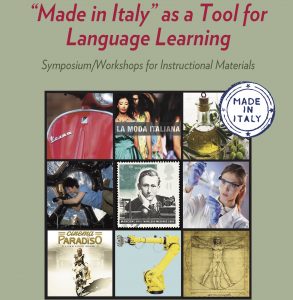
For workshop details, view here
Keynote Address:
Riccardo Giumelli, Università di Verona
Does Made in Italy still exist? New meanings of “Italian” in a changing world
The widespread idea of Made in Italy, with which we are all familiar, is related to some values and an identity that remind us of the place where these products are manufactured. Made in Italy, that great collective brand that represents masterful design and artisanal technique, tradition and excellence, can transform the teaching of language and culture. From movies and music to food, fashion, and design, all these products find their way into the language classroom for learners at all levels and ages.
Developing further this intercultural stance in the curriculum, we ask ourselves if, in a world where the processes of globalization, or rather glocalisation, advance, can we speak unequivocally of Made in Italy? The presentation will also acknowledge that we are witnessing important cultural changes that can give new meaning to Made in Italy. In line with research on the significant effect of Country of brand origin (CoO) information and/or brand name on consumer perception, we can show how cultural processes are modifying perceptions about Made in Italy.
We will highlight Made in Italy and culture through ideal type examples (e.g., PRADA, Starbucks, Caffè Nero, Napapijri, Fiat-Fca), how different hybrid products shed a light to the transition from a consumer perception of Made in Italy that recognizes culture before territory, presenting three different kinds of Made in Italy: Made in Italy 1.0, Made in Italy 2.0 and Made in Italy 3.0. The passage we are witnessing is from “Made in Italy” to a new particular one: “Made by italics.”
Made in Italy per fare in italiano
Panel discussion moderated by Enza Antenos, Montclair State University
Panelists are:
Riccardo Giumelli, Università di Verona ♦ Elda Buonanno Foley, Iona College ♦ Ryan Calabretta-Sadjer, University of Arkansas ♦ Ilaria Costa, IACE ♦ Lyn Scolaro, Prospect Hills High School (IL)
